Bottom bracket cleaning guide
The bottom bracket is the part of the frame located directly between the left and right cranks. The bottom bracket shell (the inside of the bottom bracket) houses a spindle which acts as a mount for each crank arm. The spindle allows the cranks to rotate smoothly when pedaled. The bottom bracket shell and spindle can be cleaned if instructed to do so by Product Support.
This article shows a RadCity Step-Thru 2, but the steps will be the same for most models. Follow the steps below to clean the bottom bracket shell and spindle on your bike.
Tools Needed:
- An 8 mm Allen wrench
- A crank puller for standard square taper cranks
- Clean paper towels or shop towels
- A bottom bracket removal tool for Shimano/ISIS Drive splined 20 tooth cups, such as BBT-22 Park Tool
- An adjustable wrench or socket wrench that fits the bottom bracket removal tool and has a long handle
- A quick-evaporating solvent such as denatured alcohol
- Degreaser
- Bicycle grease
- A torque wrench with an 8 mm Allen bit
- Nitrile gloves (optional)
- A bike stand or friend to hold the bike if needed
Hardware bolt head, style, and size may vary between models. Use the appropriate head size and type of tool for your bolts. Ensure the tool is pressed firmly into the bolt head and turn slowly to prevent stripping.
Take pictures of components before removing them, as they will need to be reinstalled in the same position later.
- Get the bike ready for maintenance. Turn off the bike, unlock and remove the battery, and press and hold MODE (or the power button) to discharge remaining power.

- Remove the drive side (side with chain) crank:
- Remove the crank bolt. Have a friend stabilize the bike if needed, and use an 8 mm Allen wrench, turning counterclockwise, to remove the bolt. Set the bolt aside.
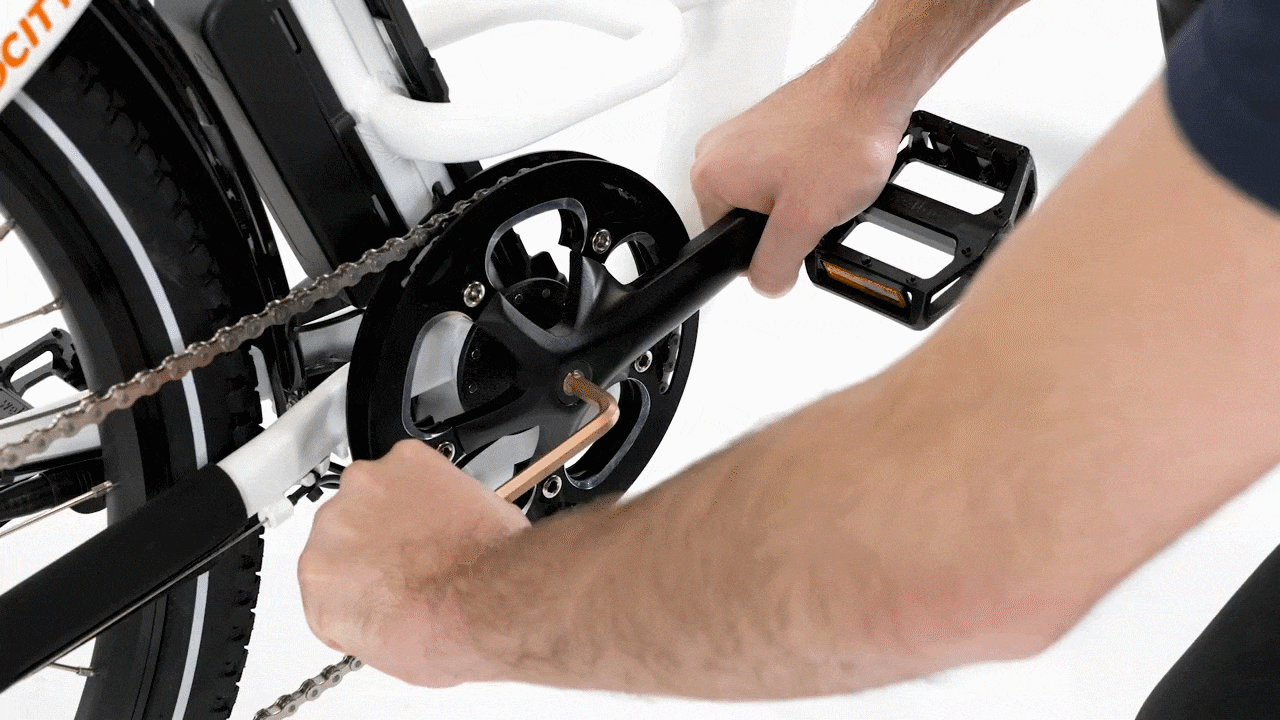
- Inspect and clean the crank threads. Take a look at the inside of the crank arm threads, and use a paper towel to remove any dirt or grime, which can cause damage.
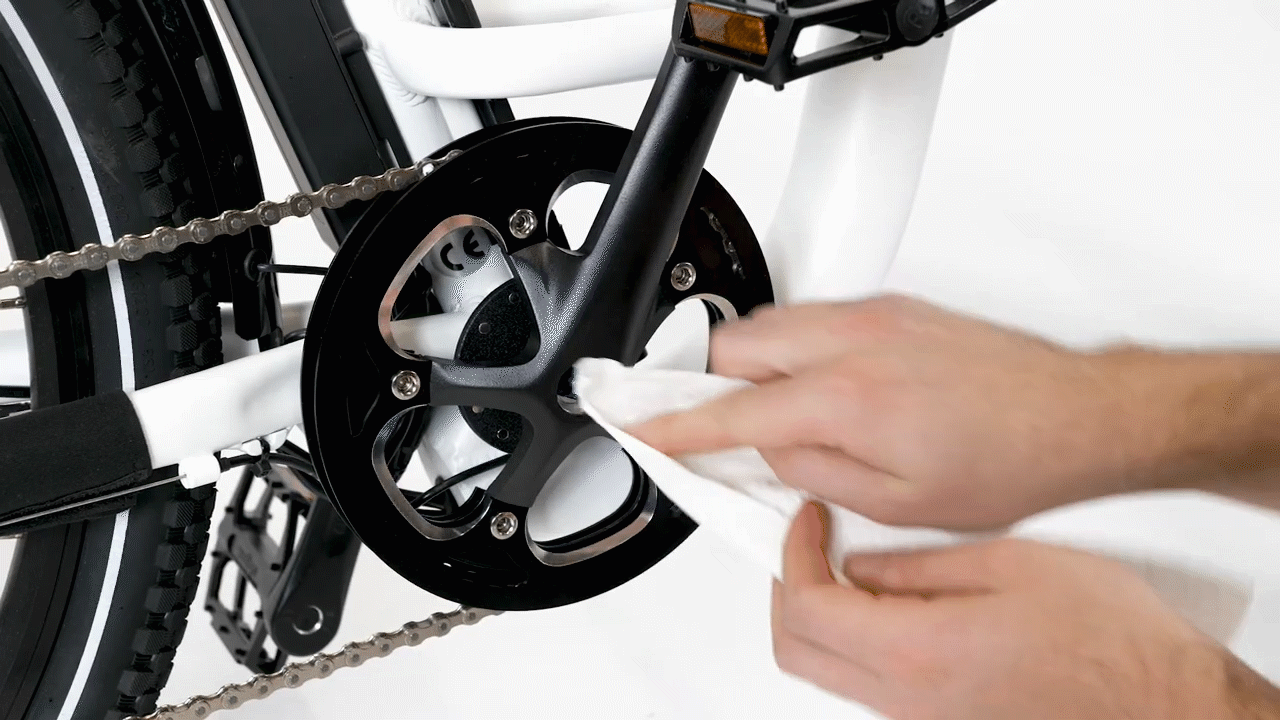
- Prepare the crank puller. Prepare the crank puller so the inner bolt, or press, is below the end of the outer portion of the tool. Apply a small amount of grease to the crank puller threads.
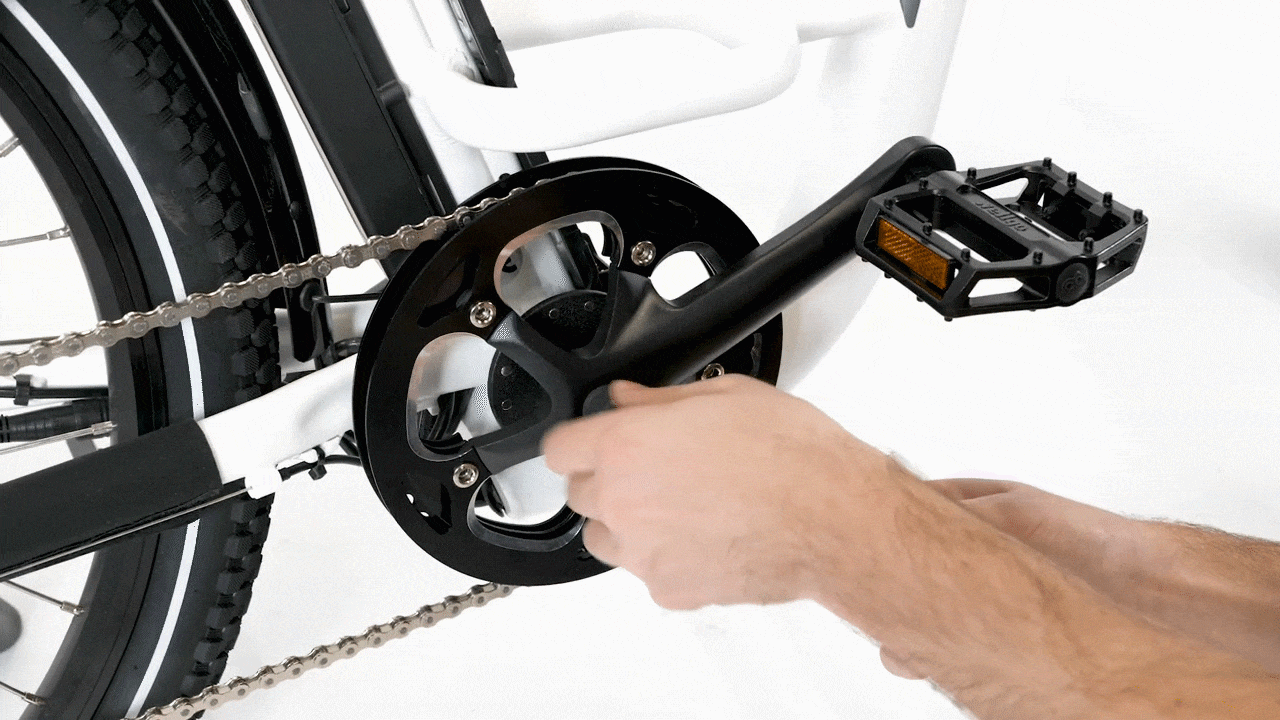
- Carefully thread in the crank puller. Carefully thread the outer portion of the tool into the crank clockwise, by hand. The outer portion of the crank puller will thread easily when properly aligned. Use caution to not cross-thread or damage the threads.
Ensure the outer portion threads into the crank fully, at least five full turns. This will ensure the crank and tool threads have as much gripping power as possible. Using the press of the tool when it is not properly secured can lead to irreversible damage to the crank.
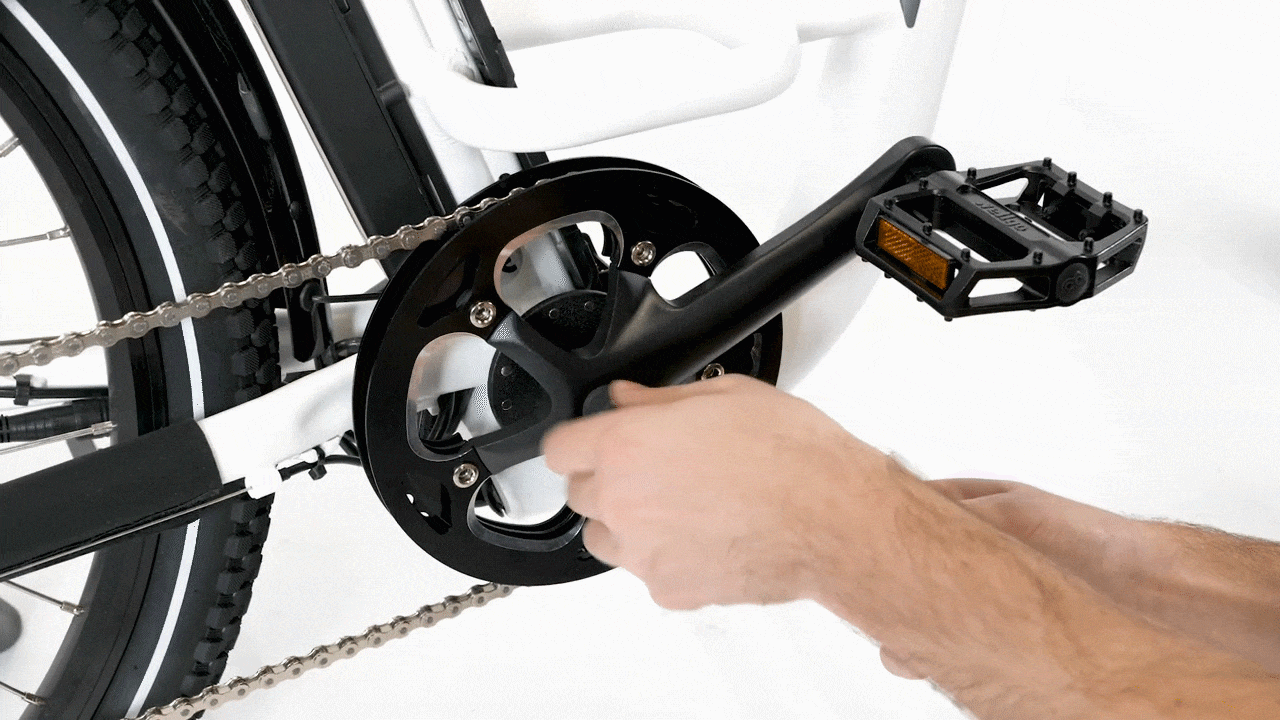
- Use the crank puller to press the crank off the bottom bracket. Hold on to the crank arm, and push down on the tool's handle to engage the inner bolt, which will press against the bottom bracket and will eventually (sometimes suddenly) unseat the crank.
Use caution and keep fingers clear of the space between the crank and the tool to avoid injury.
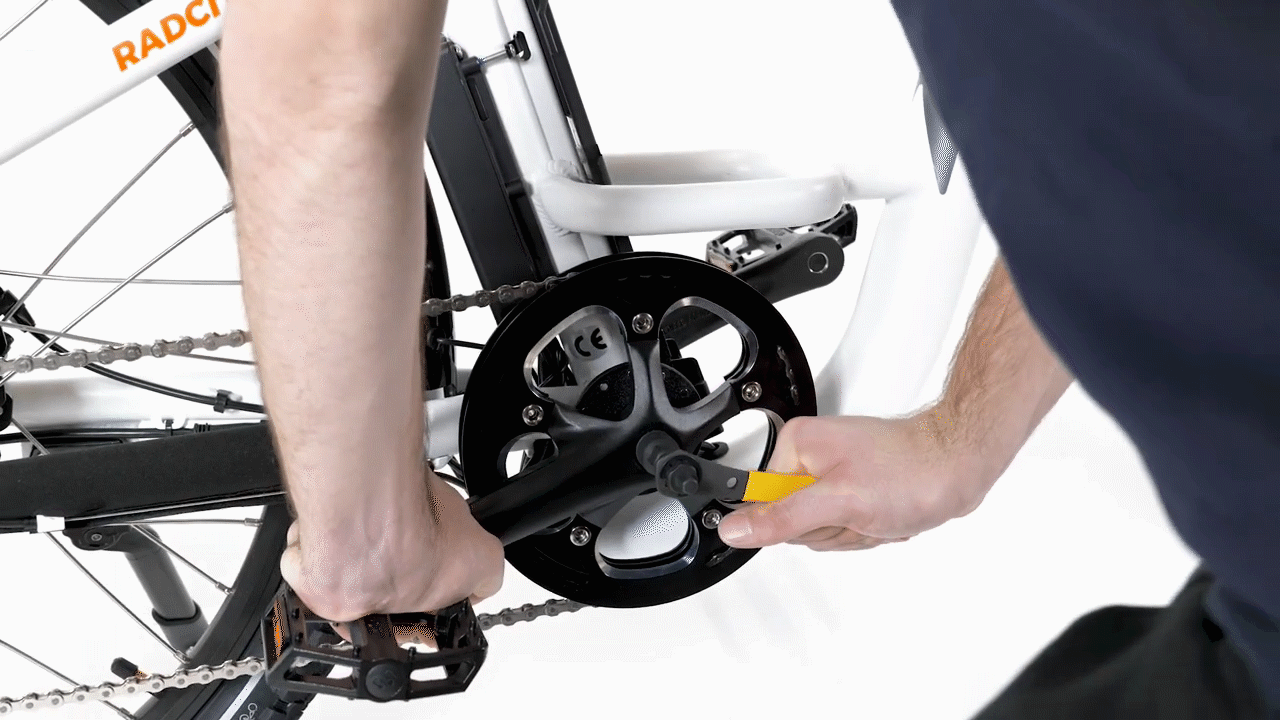
- Remove the right crank and chainring. Remove the right crank and chainring from the bike and allow the chain to hang out of the way. Remove the tool from the crank.
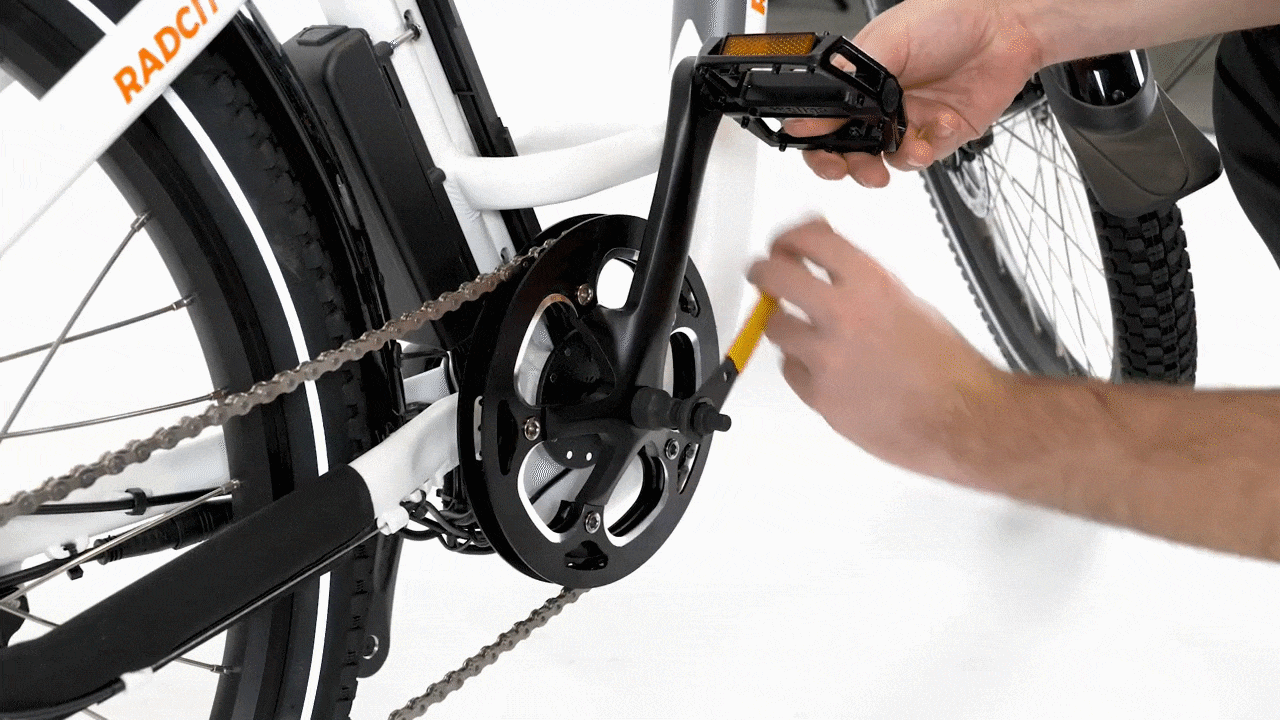
- Inspect the crank and the square taper mounts on the spindle. After the crank is removed, it's a good time to take a close look at the crank and the square taper mount to make sure it's in good condition. It is unlikely that there will be any signs of wear, rounding/warping, or damage, but if you do notice anything that could cause damage on the crank once installed, contact us for help.
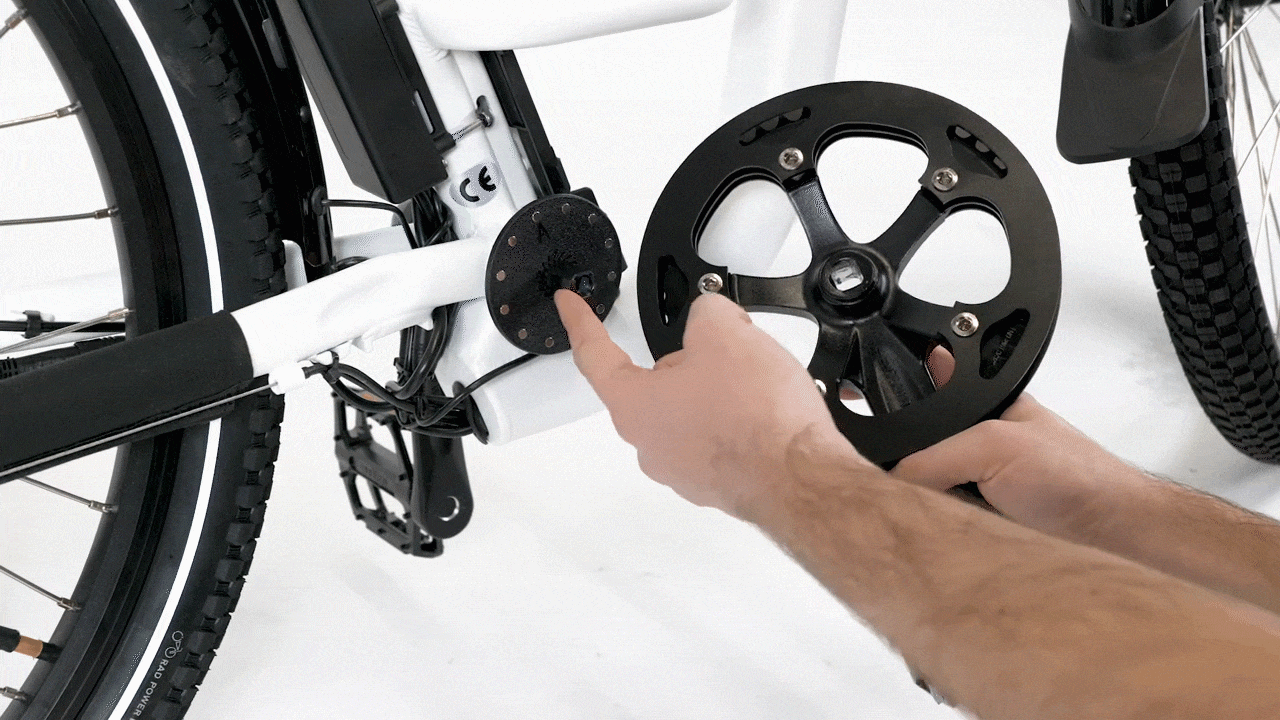
- Remove the crank bolt. Have a friend stabilize the bike if needed, and use an 8 mm Allen wrench, turning counterclockwise, to remove the bolt. Set the bolt aside.
- Remove the magnet ring from the spindle. Hold the left crank in place and carefully rotate the magnet ring off the spindle. Make note of the magnet ring orientation for reinstallation.
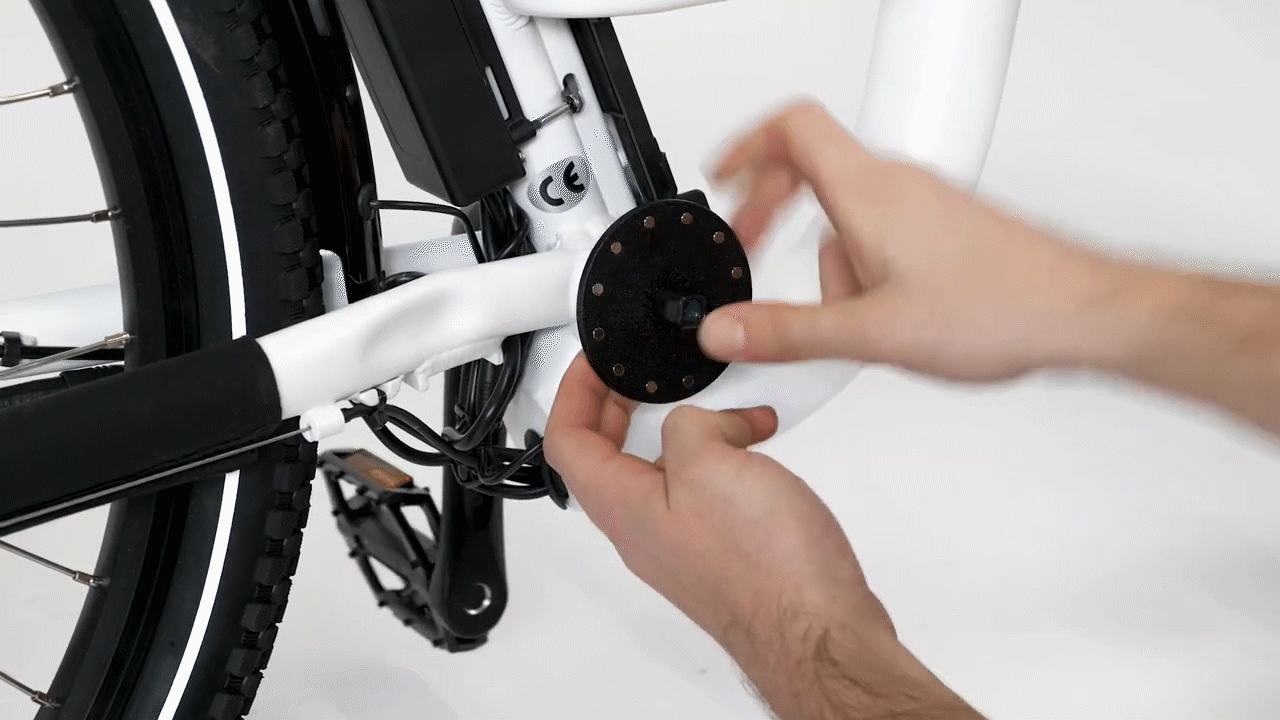
- Remove the non-drive side (side without chain) crank:
- Remove the crank bolt. Use an 8 mm Allen wrench, turning counterclockwise, to remove the bolt. Set the bolt aside.
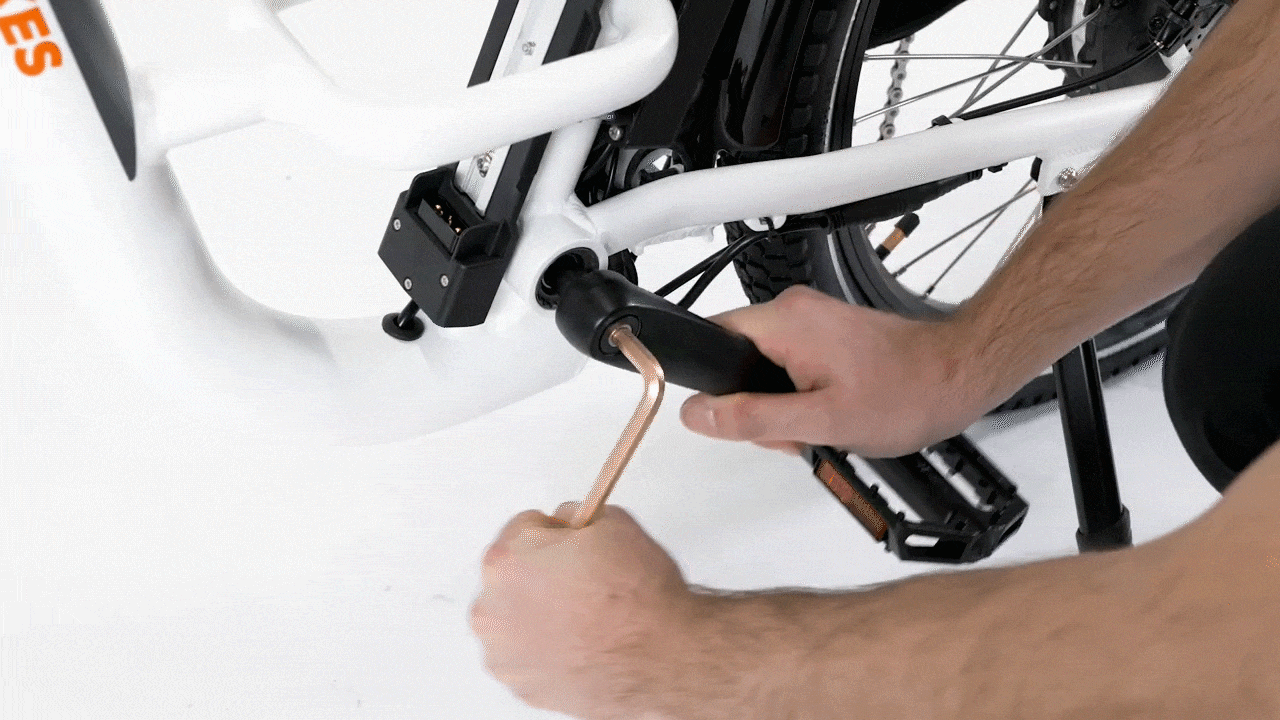
- Repeat the instructions from step 2 to remove the non-drive side crank. Inspect and clean the crank threads, and prepare the crank puller tool by backing out the inner press and threading the outer portion into the crank. Use the crank puller tool to press the crank off the bottom bracket. Inspect the crank and square taper mounts and contact us if needed.
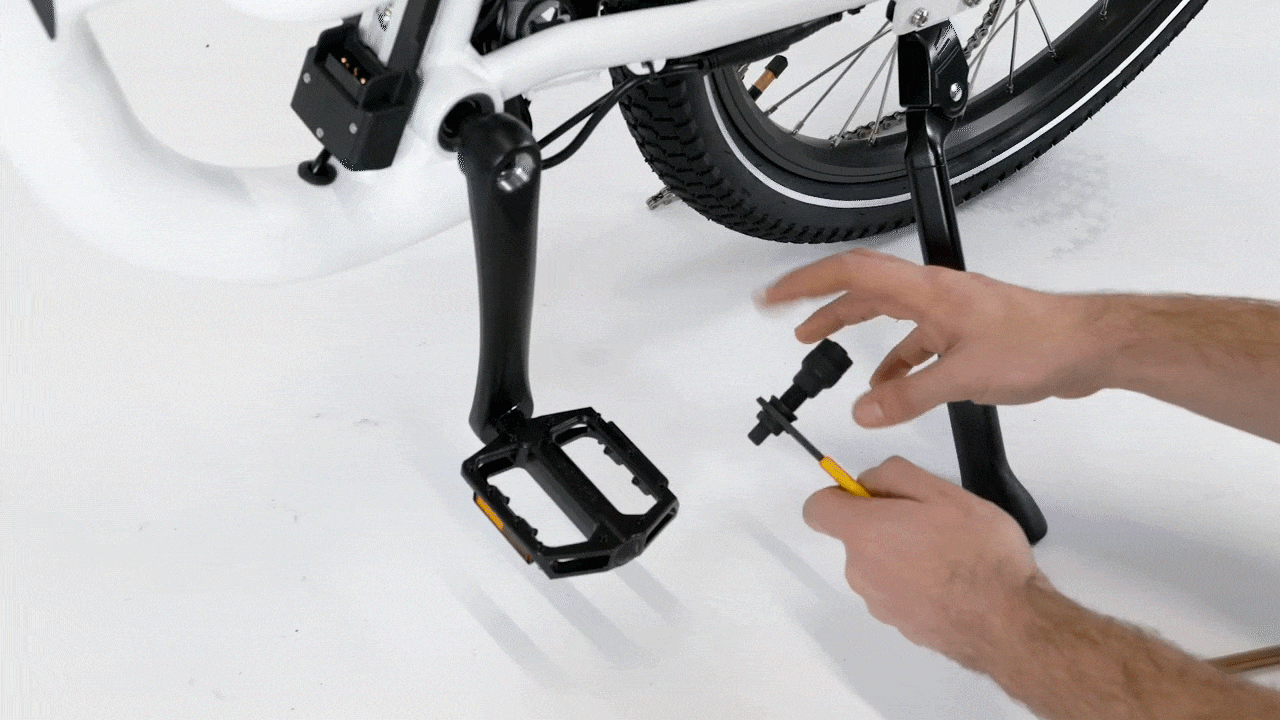
Continue to the next section to remove the bottom bracket spindle.
- Remove the crank bolt. Use an 8 mm Allen wrench, turning counterclockwise, to remove the bolt. Set the bolt aside.
- Remove the bottom bracket spindle cups:
- Insert the bottom bracket tool. On the non-drive side of the bike, align the splines on the bottom bracket tool with those on the bottom bracket spindle cups, and press together.
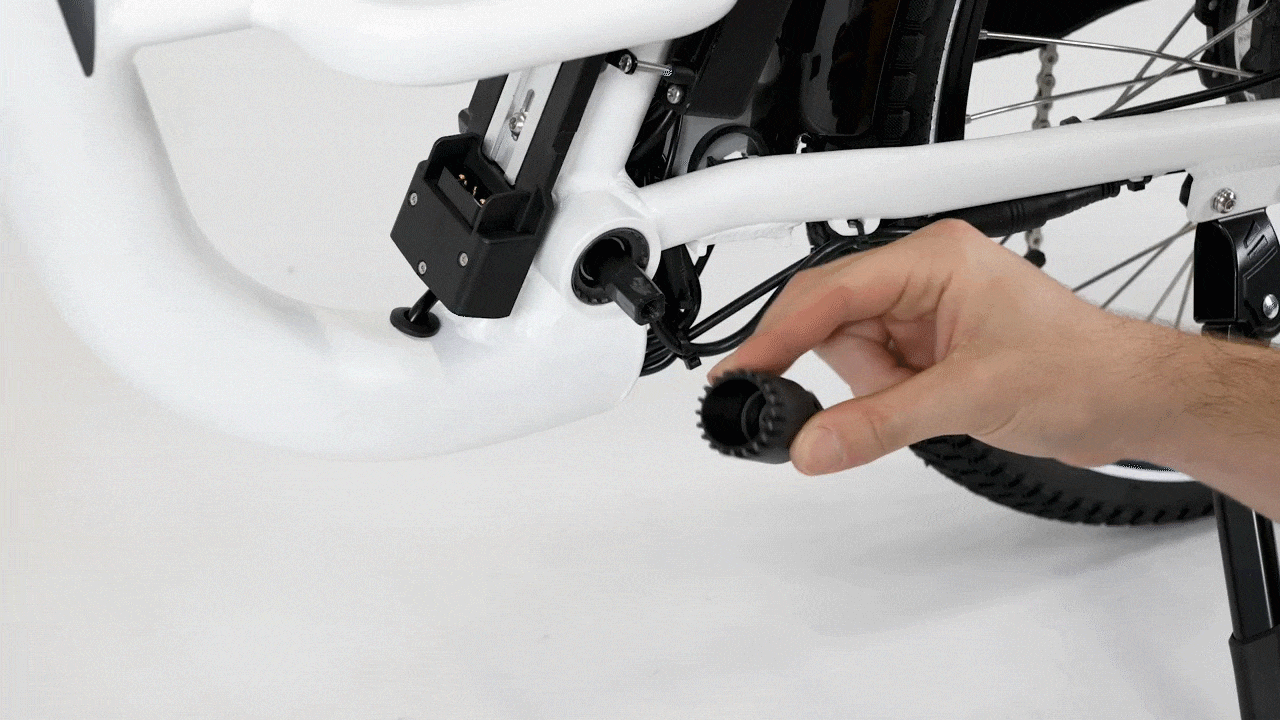
- Secure the wrench and remove the spindle cup. After ensuring the tool is fully seated against the bottom bracket spindle cups, secure the wrench so the handle points toward the front of the bike and is angled slightly upward. Press down on the wrench to turn it counterclockwise to loosen the cup. Remove the cup and set it aside.
Standing on the opposite side of the bike when engaging the wrench can help make it easier to loosen the spindle cup.

- Repeat on the drive side, turning the wrench clockwise.
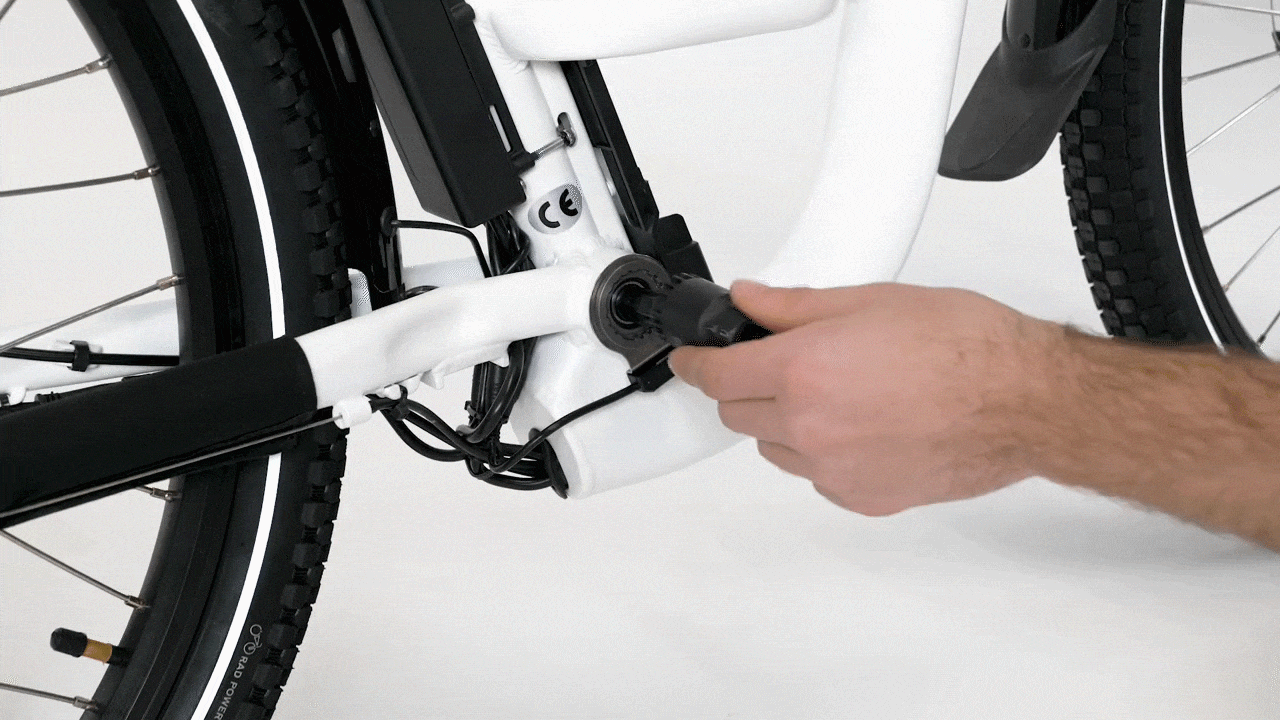
- Insert the bottom bracket tool. On the non-drive side of the bike, align the splines on the bottom bracket tool with those on the bottom bracket spindle cups, and press together.
- Remove the bottom bracket spindle. Pull the spindle out of the bottom bracket and through the PAS sensor mount. Set the spindle aside for reinstallation, or recycle according to local rules if the spindle will be replaced.
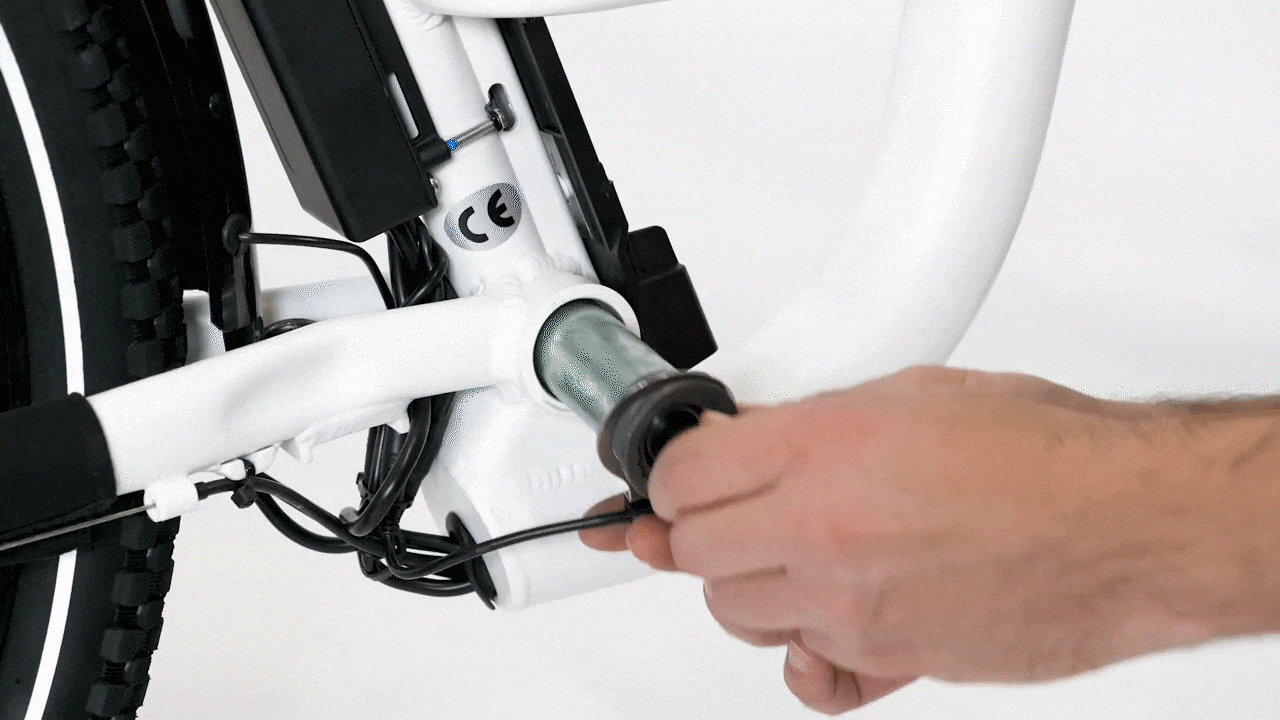
- Clean the bottom bracket shell and threads. Use a clean paper towel to remove all grease, grit, and grime, and a small metal brush to clean any rust from the bottom bracket shell and threads. If needed, use a quick-evaporating solvent such as denatured alcohol and follow the manufacturer's instructions to clean the shell and threads. Use caution to keep any solvent from making contact with plastics on the bike, such as the PAS sensor, magnet ring, and cable housing, as solvents can damage plastics.
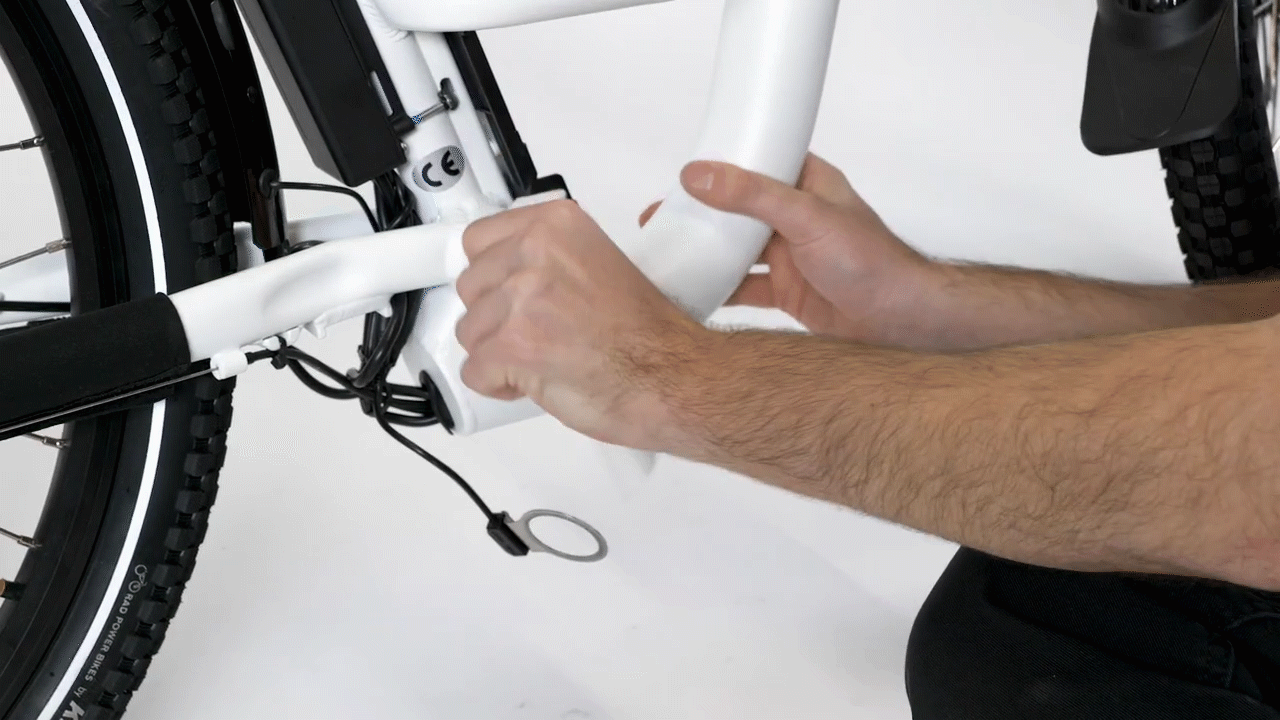
Wait until the bottom bracket shell and threads are completely dry. Do not use water or any water-based cleaners on the bottom bracket shell. They can require significant time to dry and can leave behind residue that can cause damage.
- Ensure the threads and shell are completely dry, then apply bicycle grease. Once the threads and shell are completely dry, apply grease to the inside of the bottom bracket shell and all of the threads.
- Clean and grease the bottom bracket spindle and crank mounts. Use a clean paper towel to wipe off any excess grease, dirt, or grit from the bottom bracket spindle and crank mounts. If needed, apply a small amount of degreaser to a paper towel and clean the spindle. Once the spindle is clean, apply grease to the spindle, threads, and mounts.
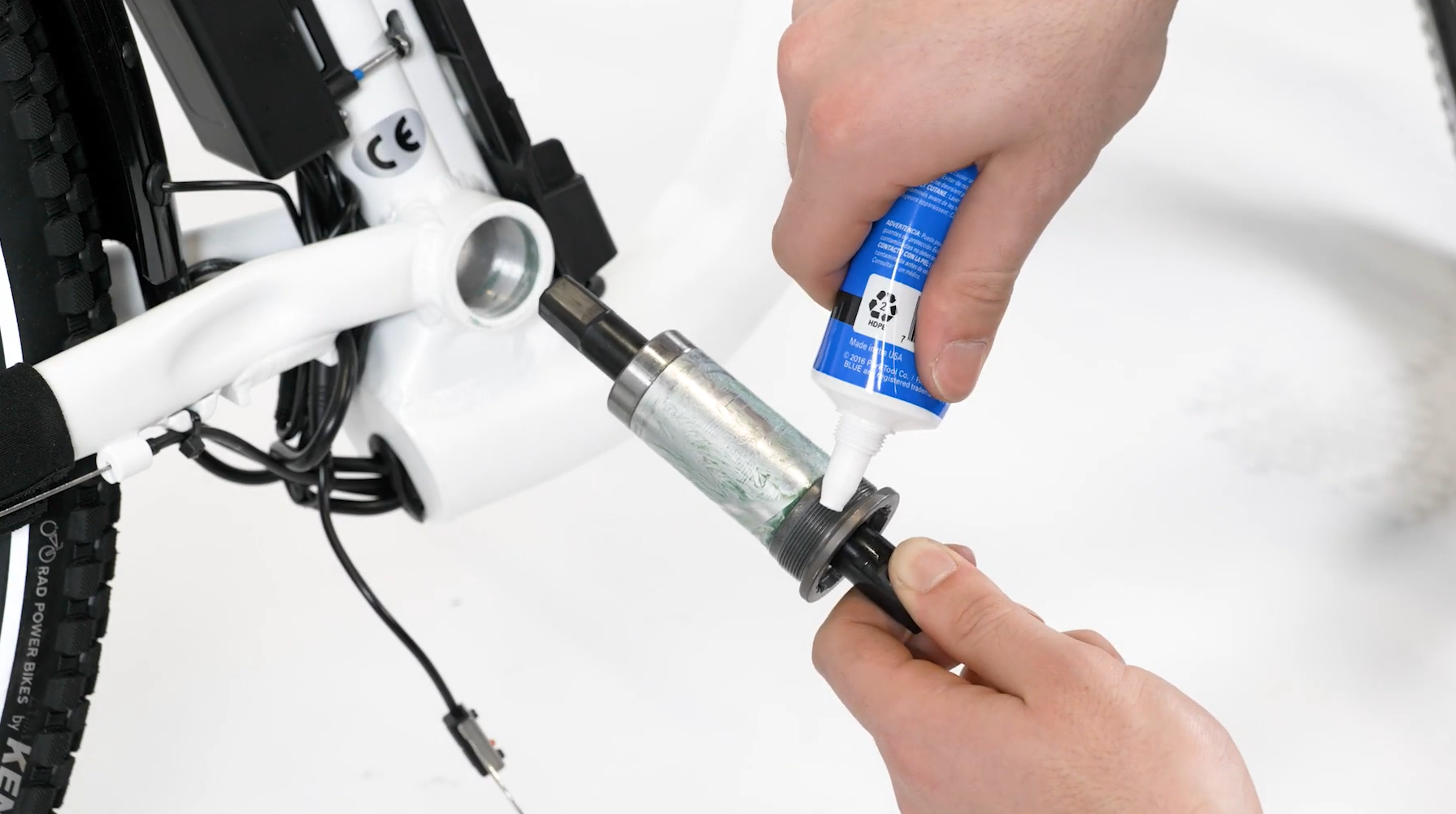
Continue to the next section to reinstall the bottom bracket spindle.
- Place the PAS sensor mount into position on the bottom bracket and reinstall the spindle. Place the PAS sensor mount into position, ensuring the cable is not twisted and the screws face the bike. Pass the spindle through the PAS sensor mount and into the bottom bracket shell.
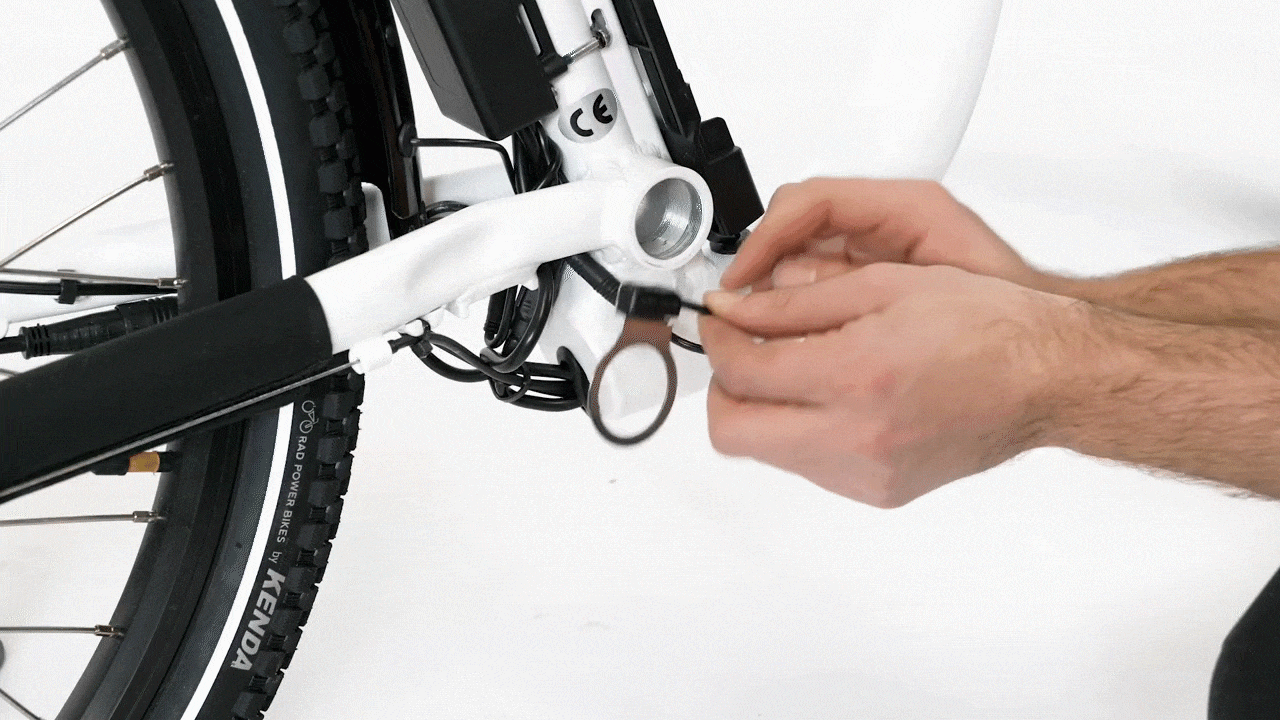
- Reinstall the spindle cups.
- Apply grease to the outside of the spindle cups.
- Thread in the spindle cups. Carefully thread the drive side spindle cup by hand, turning counterclockwise. The spindle cups must thread easily. Do not cross-thread or damage threads. Repeat with the non-drive side spindle cup, turning clockwise.
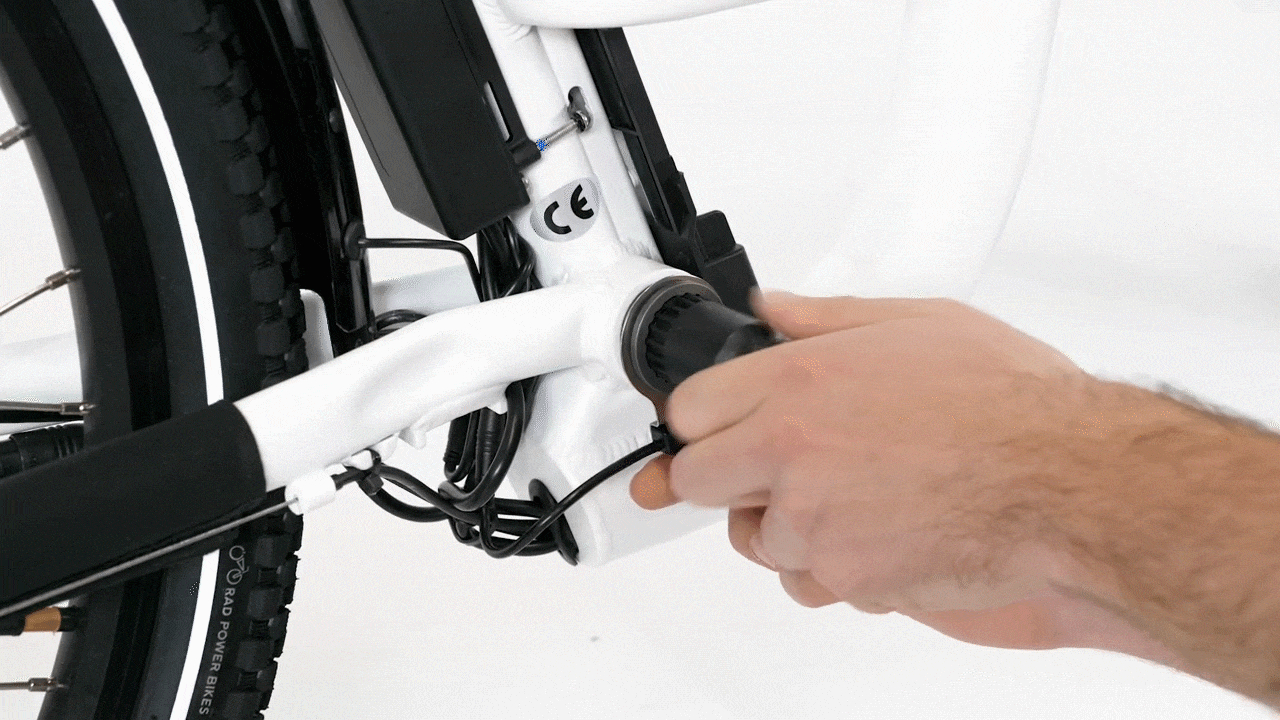
- Torque the spindle cups. Use a torque wrench to torque the drive side spindle cup first to 60 Nm, and then repeat on the non-drive side spindle cup.
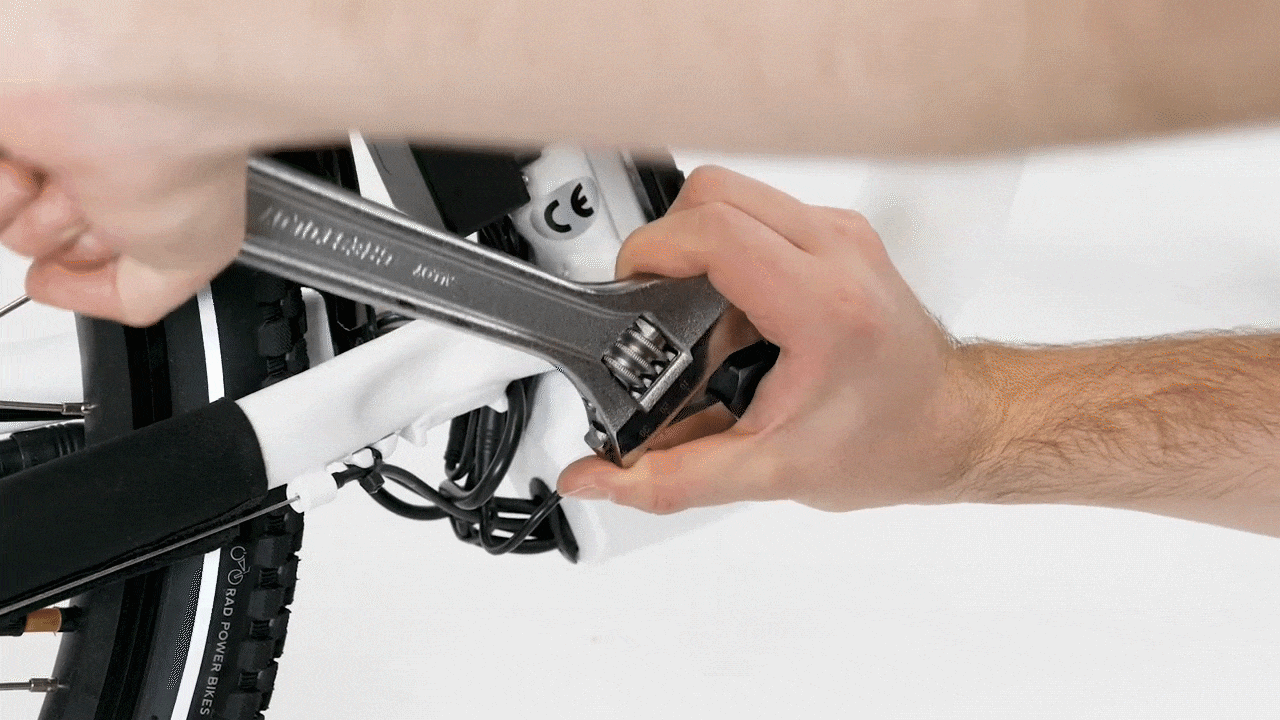
- Reinstall the magnet ring.
- Locate the magnet ring and orient it so the side with the arrows faces toward the bike.
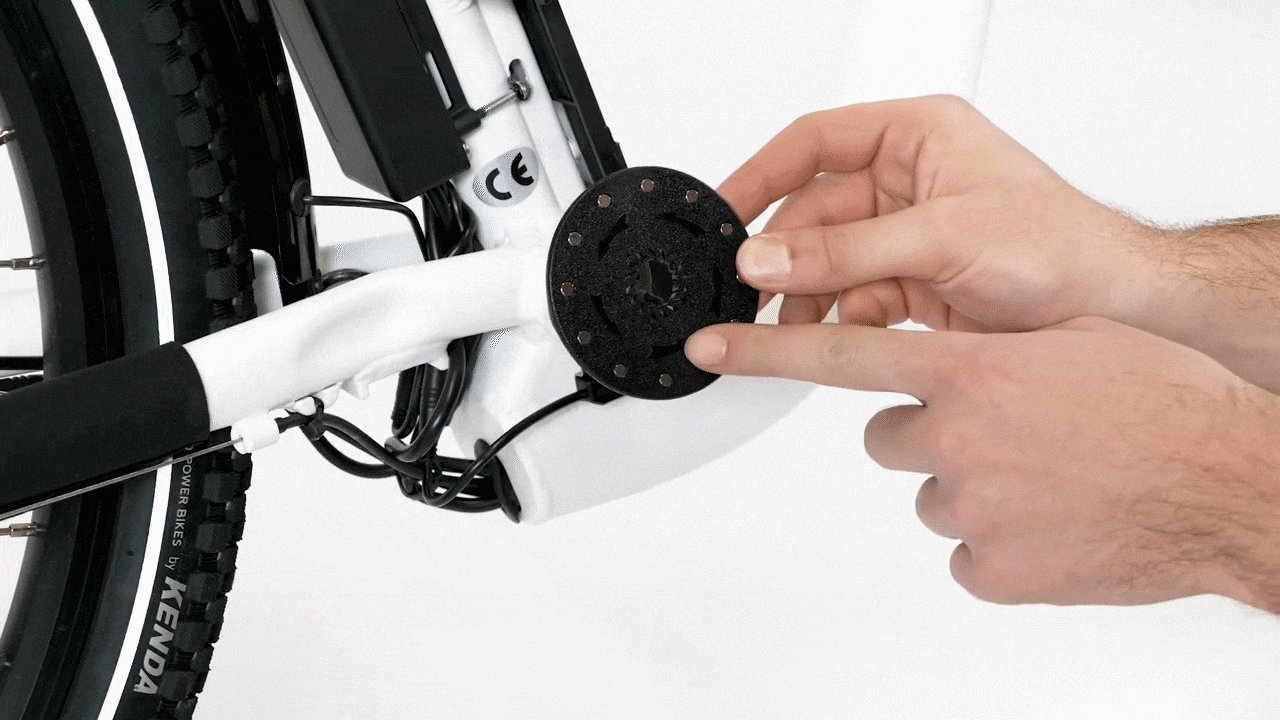
- Reinstall the magnet ring on the spindle. Press the ring onto the mount and twist it clockwise to move the ring as close as possible to the PAS sensor without the ring touching the sensor. There must be less than 3 mm of space (about the thickness of two credit cards) between the magnet ring and the PAS sensor.
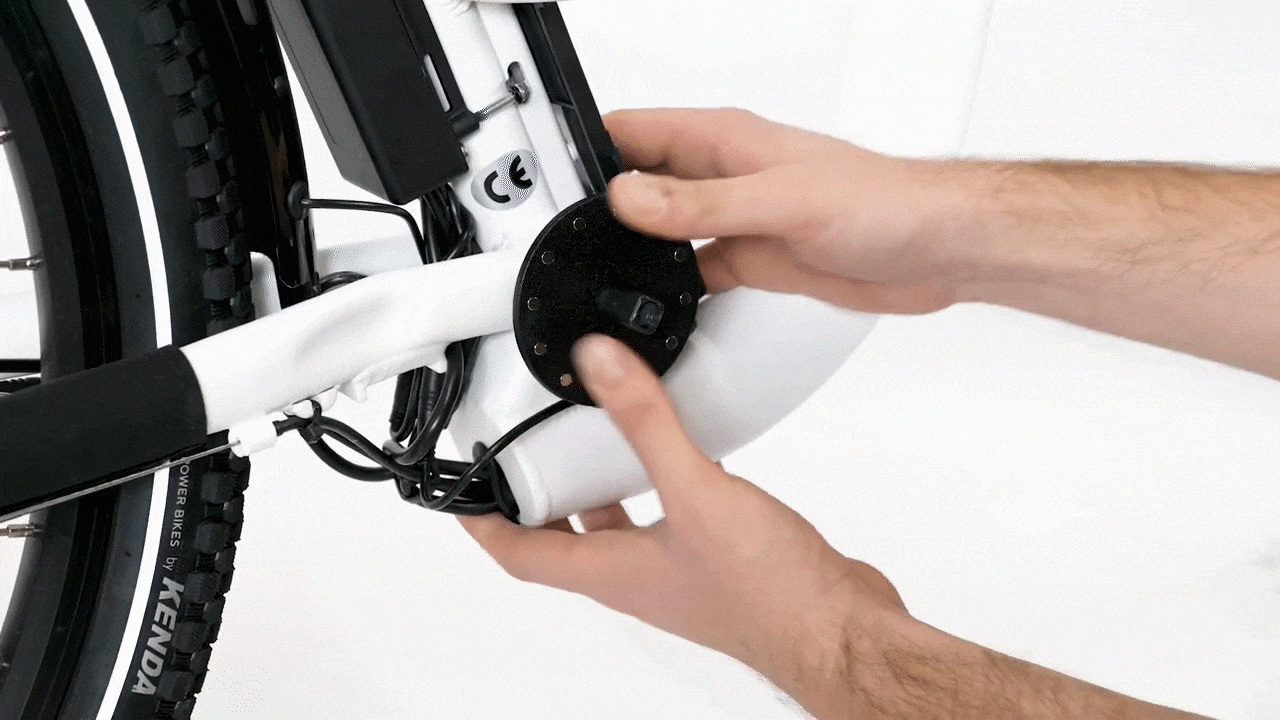
.png?revision=1)
Continue to the next section to reinstall the cranks.
- Locate the magnet ring and orient it so the side with the arrows faces toward the bike.
- Locate the cranks and the crank arm bolts.
- Reinstall the drive side crank.
- Orient the drive side crank and chainring for installation. Position the drive side crank and chainring as shown below, and press onto the drive side crank arm mount.
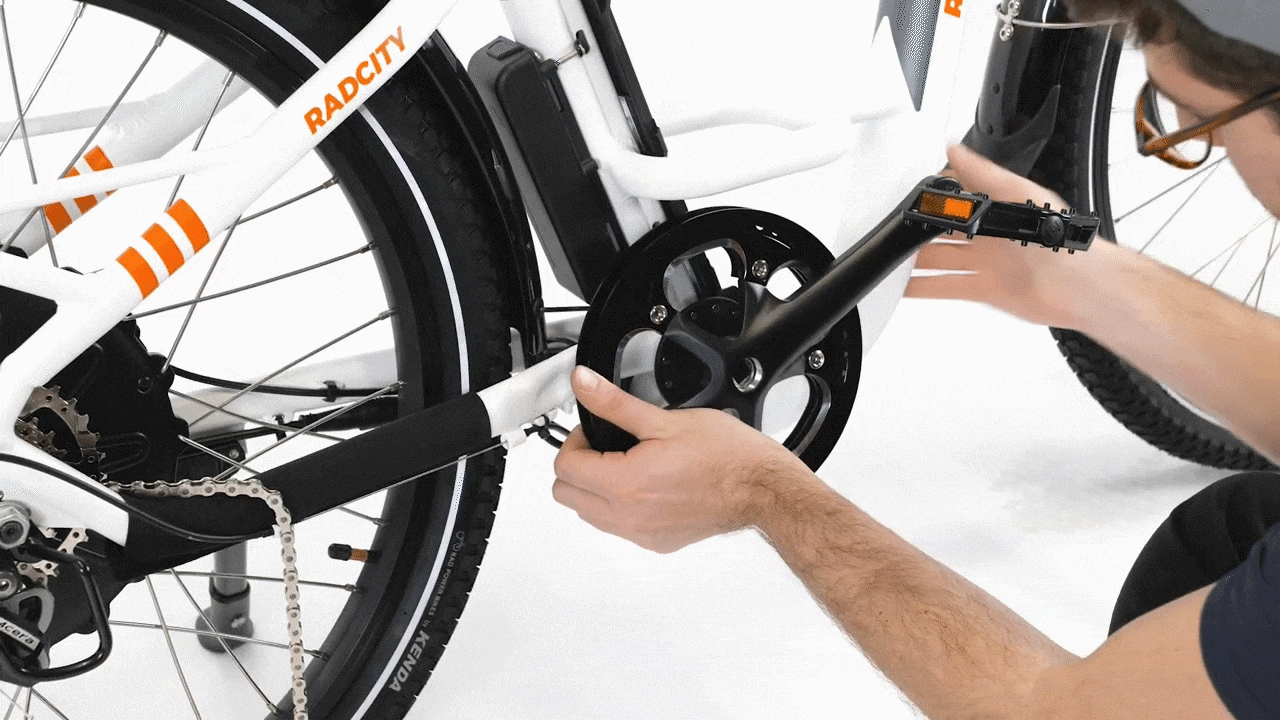
- Install the crank arm bolt. Apply a small amount of bicycle grease to the bolt threads. Carefully thread the bolt into the crank arm by hand.
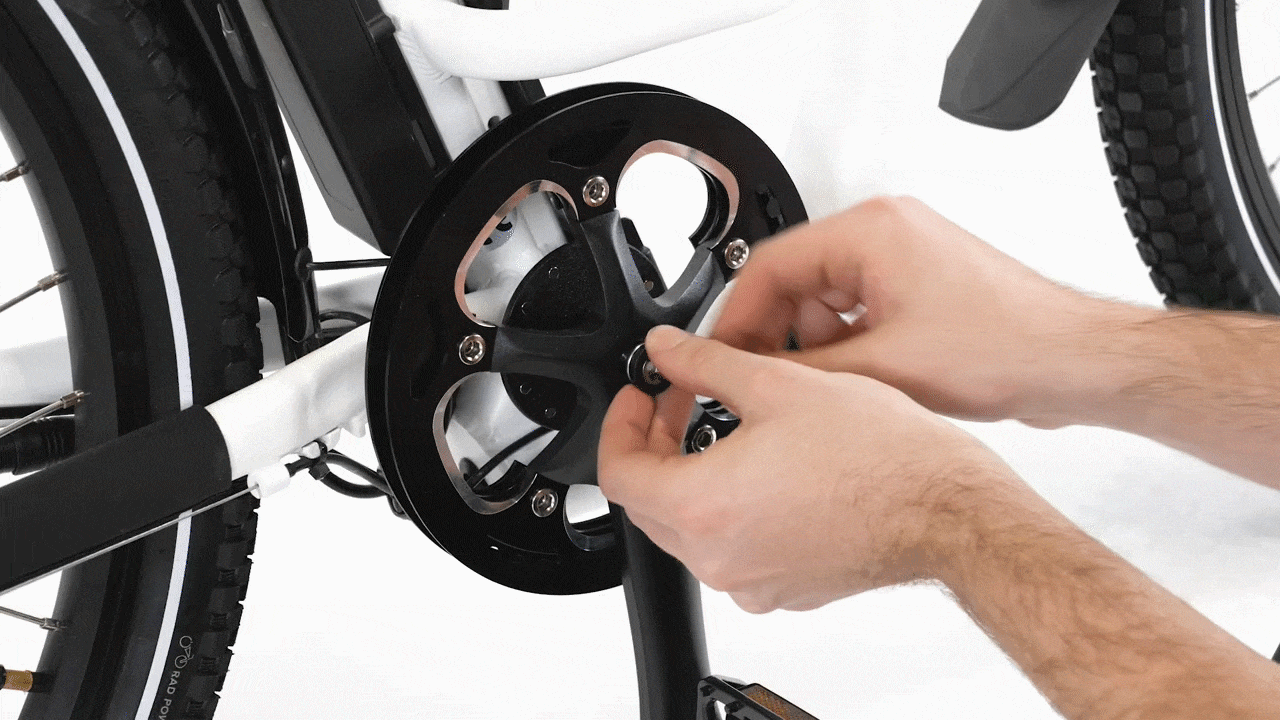
- Orient the drive side crank and chainring for installation. Position the drive side crank and chainring as shown below, and press onto the drive side crank arm mount.
- Reinstall the non-drive side crank.
- Orient the non-drive side crank for installation. Orient the left crank arm so it is in line with the right crank arm and the pedals are on opposite ends.
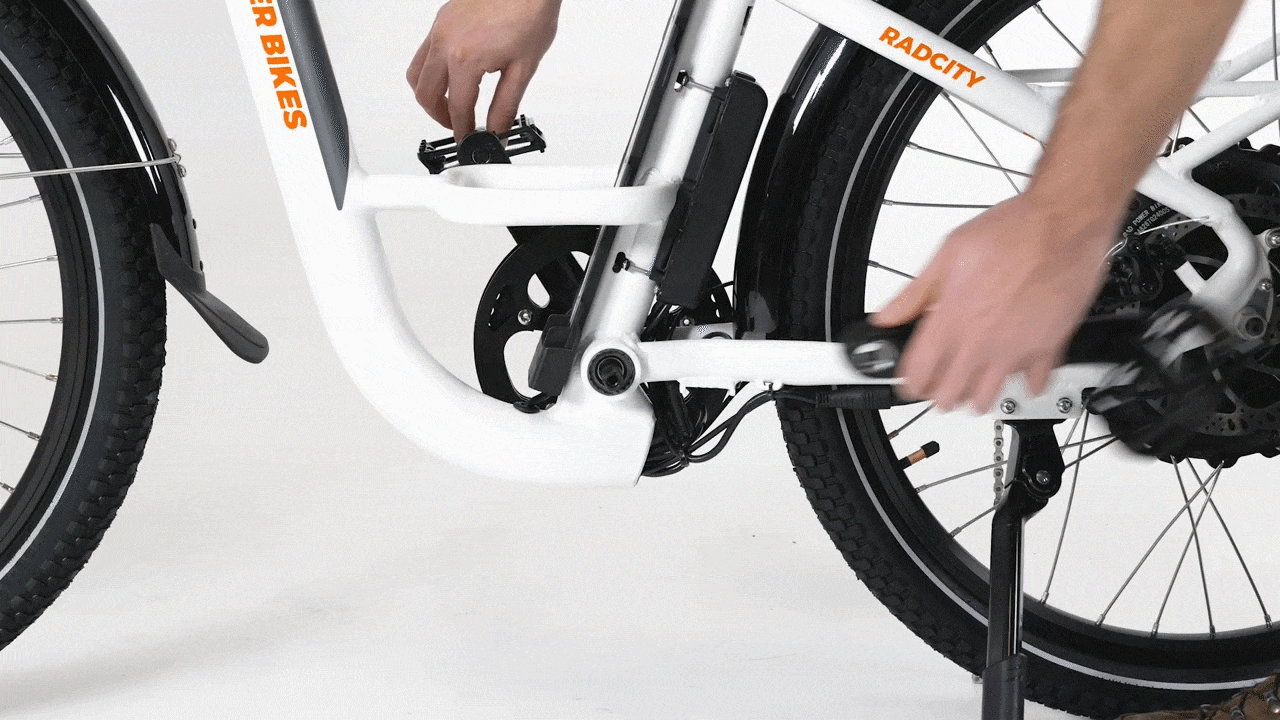
- Install the crank arm bolt. Apply a small amount of bicycle grease to the bolt threads. Carefully thread the bolt into the crank arm by hand.
- Orient the non-drive side crank for installation. Orient the left crank arm so it is in line with the right crank arm and the pedals are on opposite ends.
- Torque the crank arm bolts. Use a torque wrench with an 8 mm Allen bit to torque each crank arm bolt to 35 Nm.
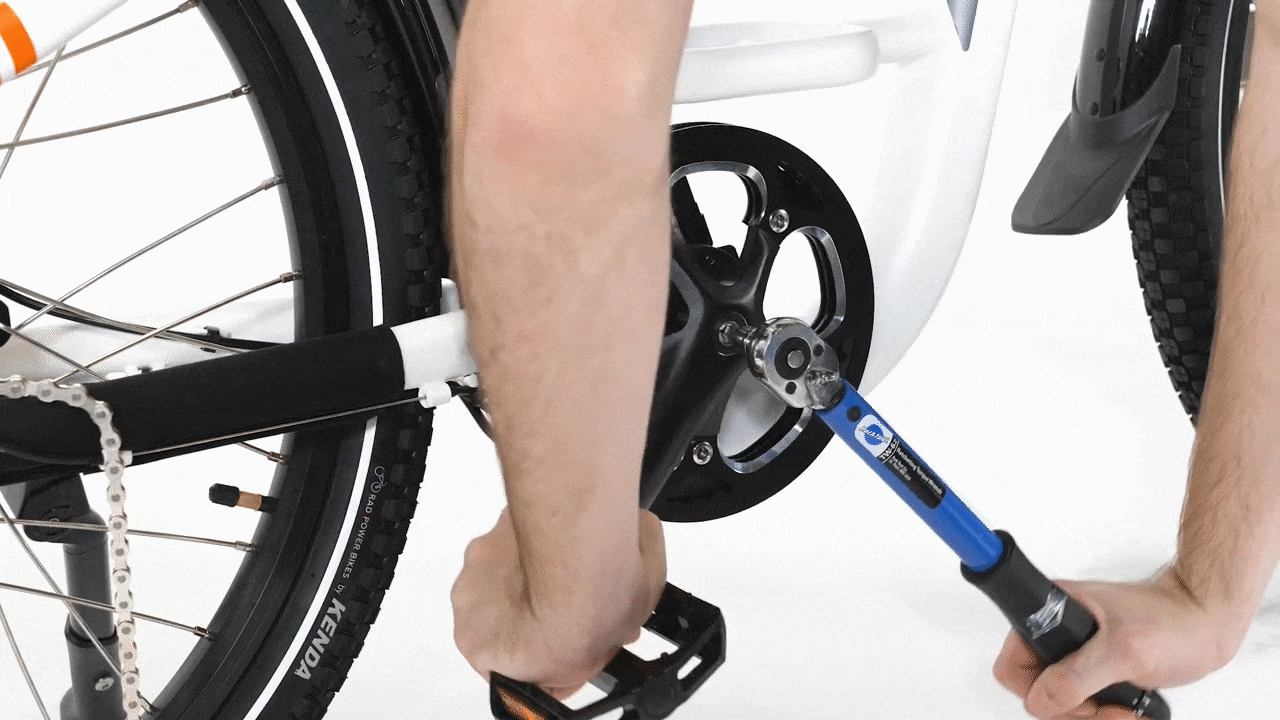
- Reinstall the chain. Push the derailleur housing forward to create chain slack. At the same time, use a paper towel to lift the chain onto the teeth of the chainring.
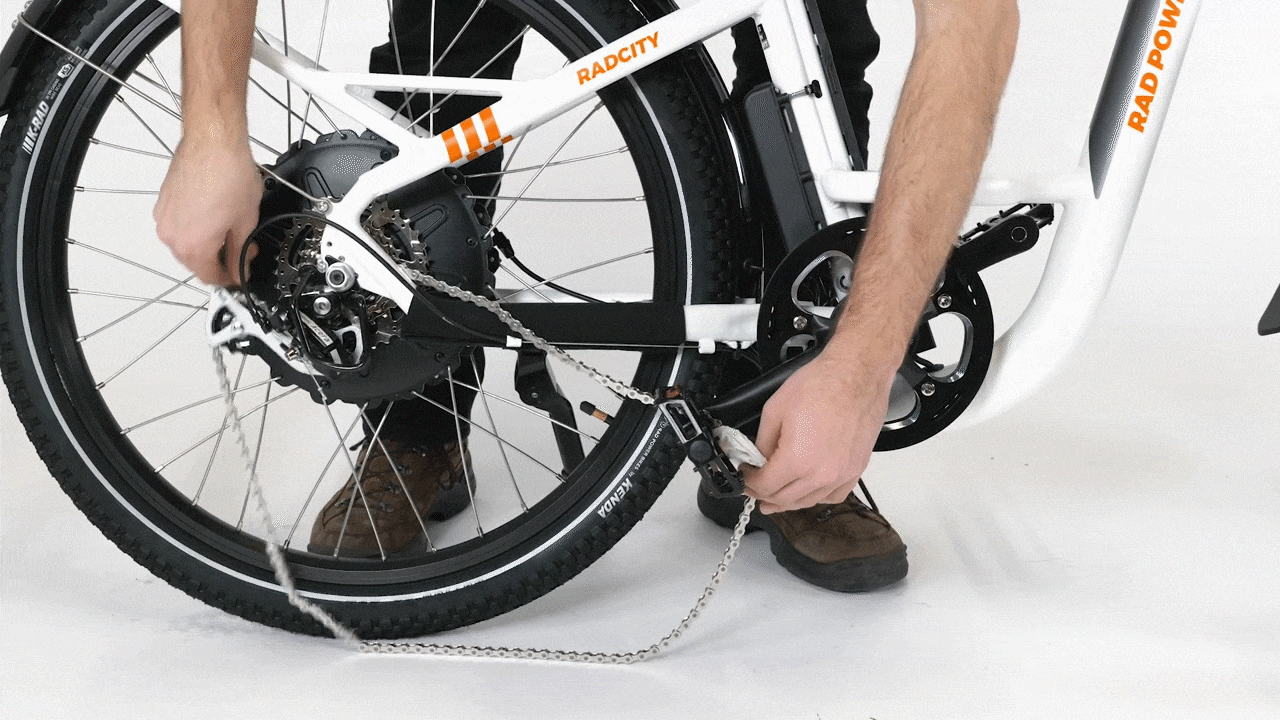
- Test the chain. Prop the bike on the kickstand so the rear wheel is off the ground, and rotate the cranks backward to revolve the rear wheel. Check that the chain is properly mounted on the chainring.
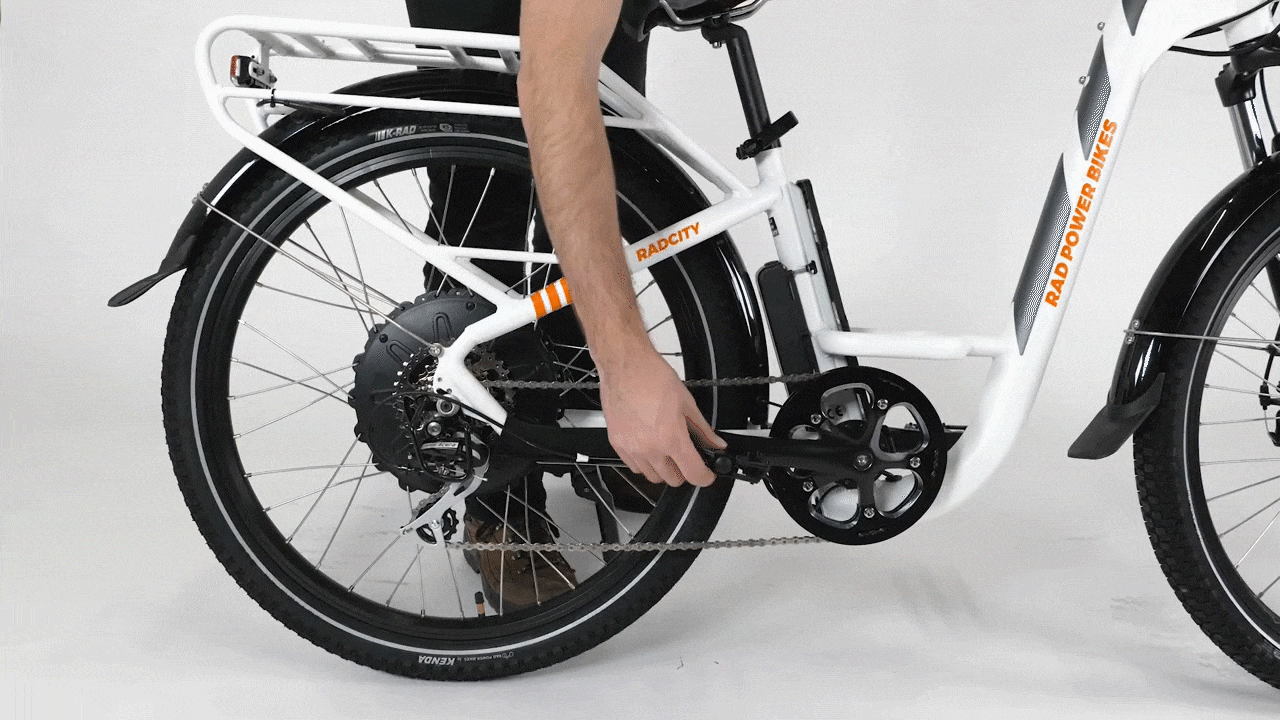
- Reinstall the battery, test the bike fully before riding, and ride Rad!
